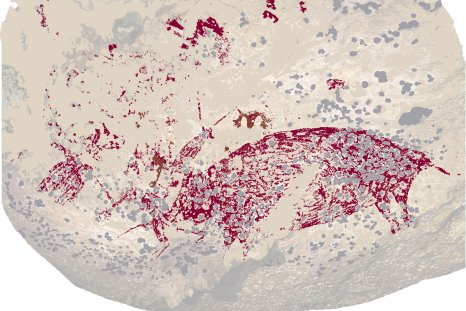A curious circular structure and a ball court, both from the pre-Hispanic period, have been identified at a newly documented archaeological site in Mexico.
The circular structure and surrounding remains were discovered in the area of Tecacahuaco, a town in the Huasteca region of Hidalgo state in the center of the country, the Mexican National Institute of Anthropology and History (INAH) announced in a news release.
The archaeological finds were reported to local authorities by a resident who was looking to expand his land. INAH was then notified of the discovery, with archaeologists subsequently making three visits to the site to document the remains.
The circular structure, which features a well-preserved staircase, appears to represent the base of a larger construction, although INAH did not provide details about what the potential original purpose of the building could have been.
Archaeologists have also documented other architectural remains nearby, including a ball court—still under plant cover—that measures approximately 60 feet in length.
Pre-Hispanic Mesoamerican societies played several ballgames on courts like these. But the games were not created solely for entertainment. They served a fundamental ritual and political role for these ancient cultures, with the ball courts often occupying "prime real estate" in the ceremonial centers of some cities.
While the age of the circular structure and surrounding remains in general is still unclear, fragments of obsidian (a type of naturally occurring volcanic glass) collected on the ground surface indicate that the site was likely occupied during the Postclassic period of Mesoamerican history (around A.D. 900-1521). The end of this period corresponds with the beginning of the Spanish conquest of the region.
"We have begun the work of photogrammetry and analysis that will allow us to document the characteristics of the buildings in the records of the Public Registry of Monuments and Archaeological and Historical Zones, in order to give certainty and identity to this area of monuments," INAH researcher Osvaldo José Sterpone said in the news release.
Following the identification of the circular structure, residents began asking older people in the hopes of finding out more about the site, according to INAH. This effort revealed stories of healers who, until a few decades ago, purportedly visited the site to make offerings and requests for wellness.
The stories describe how when someone fell ill, the healer and ailing person would go to the site to make an offering of liquor or zacahuil (a large tamale made with corn dough that is traditional in the Huasteca region of Hidalgo).
Do you have a tip on a science story that Newsweek should be covering? Do you have a question about archaeology? Let us know via science@newsweek.com.
Disclaimer: The copyright of this article belongs to the original author. Reposting this article is solely for the purpose of information dissemination and does not constitute any investment advice. If there is any infringement, please contact us immediately. We will make corrections or deletions as necessary. Thank you.



